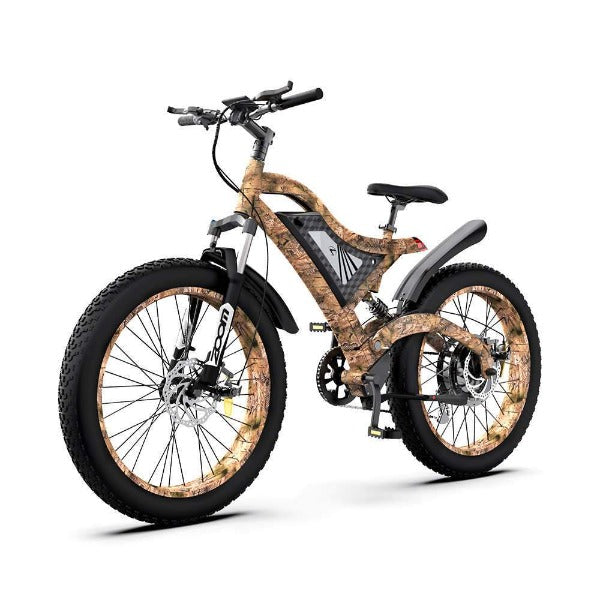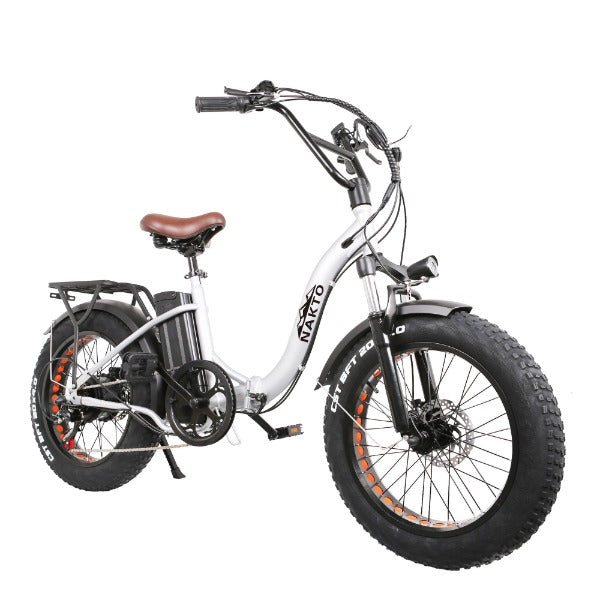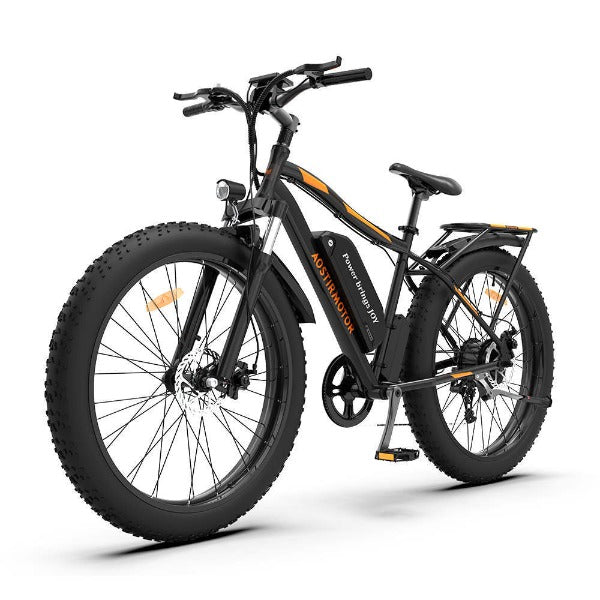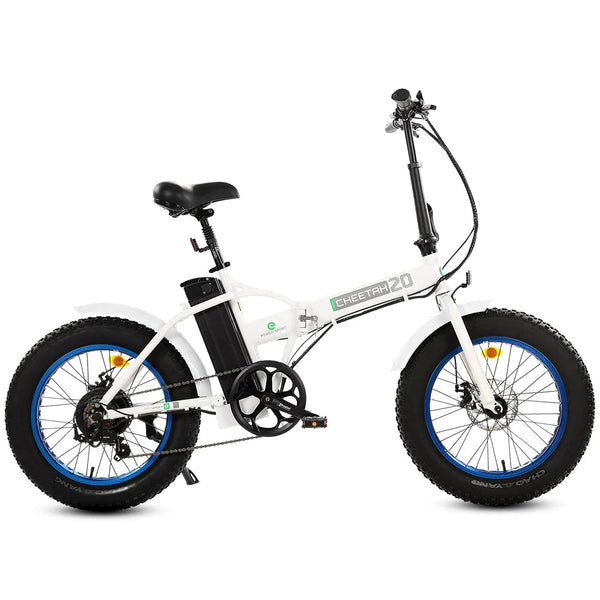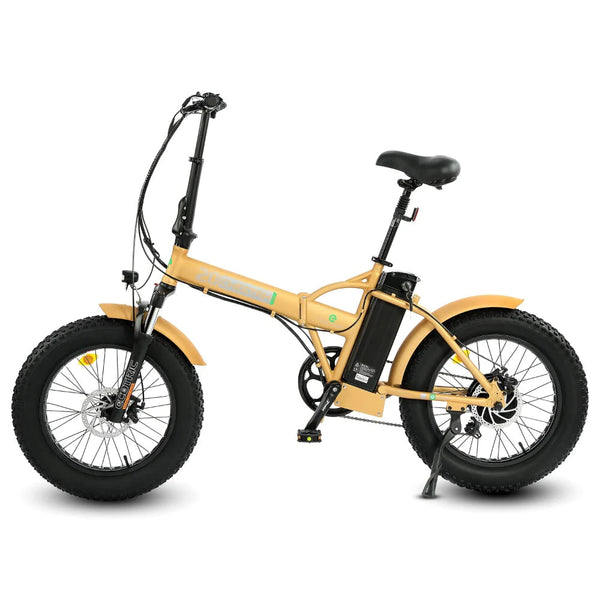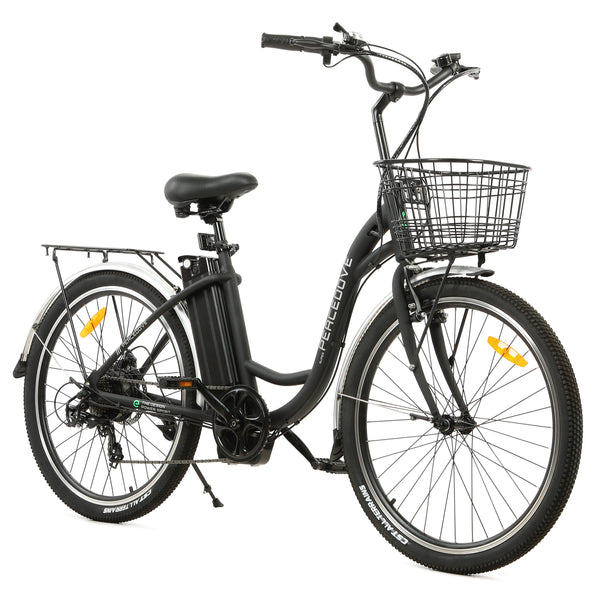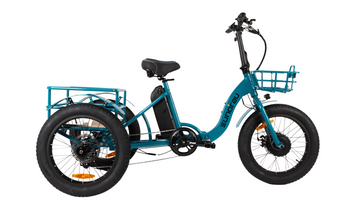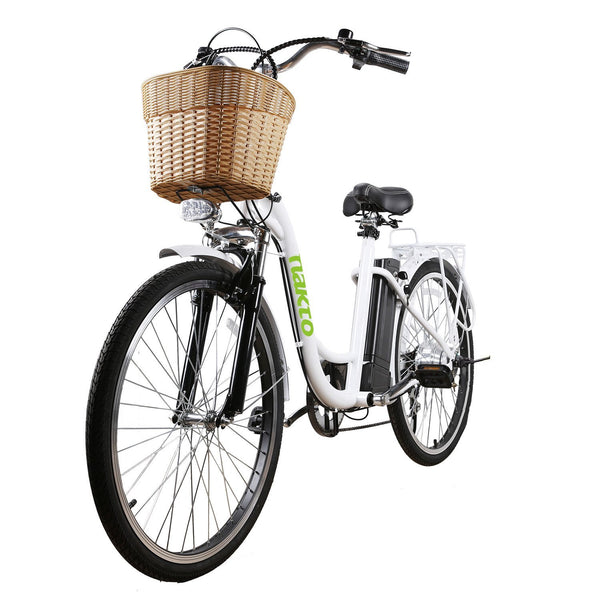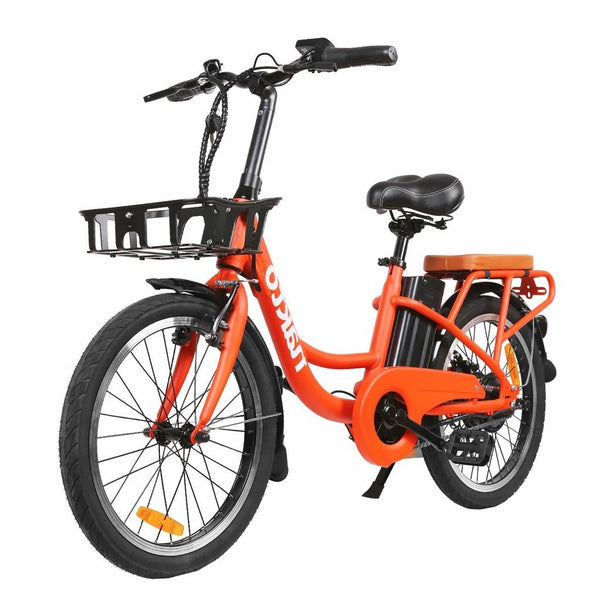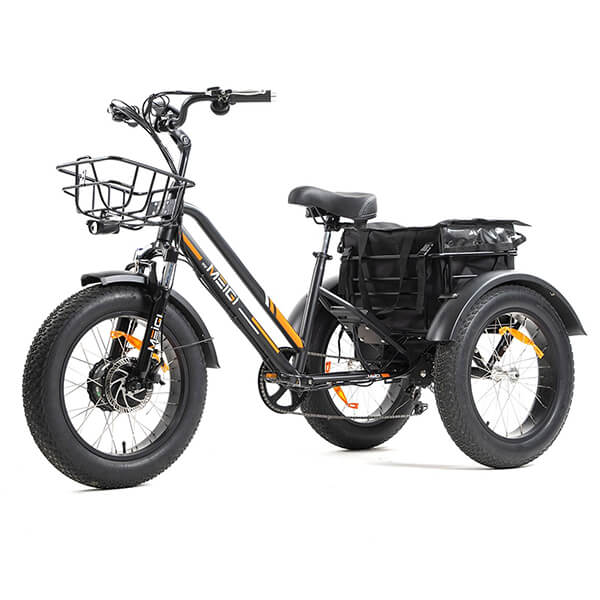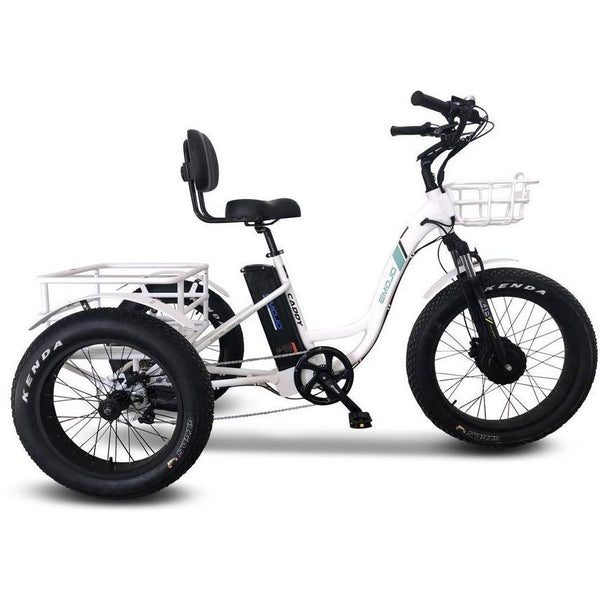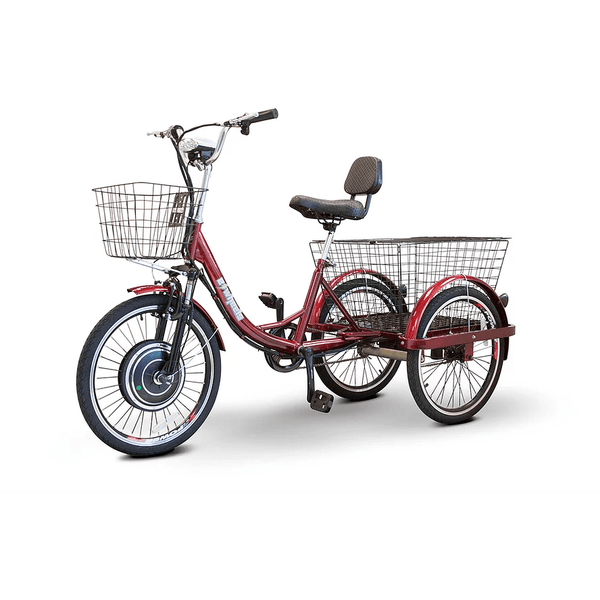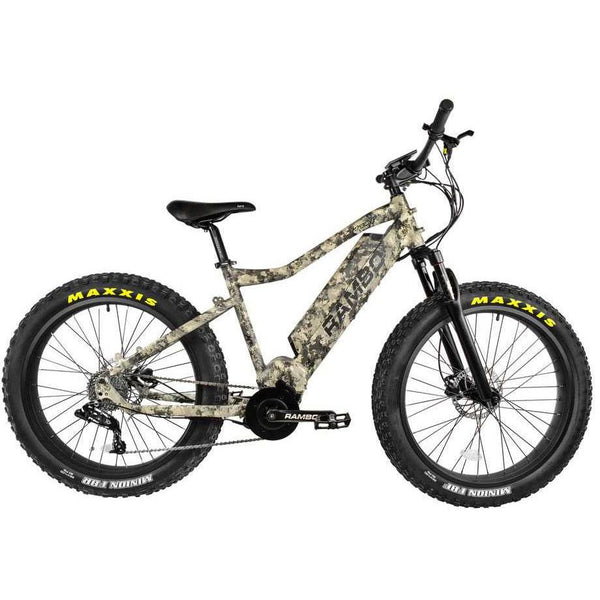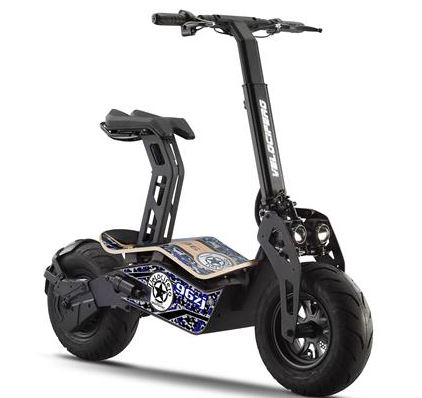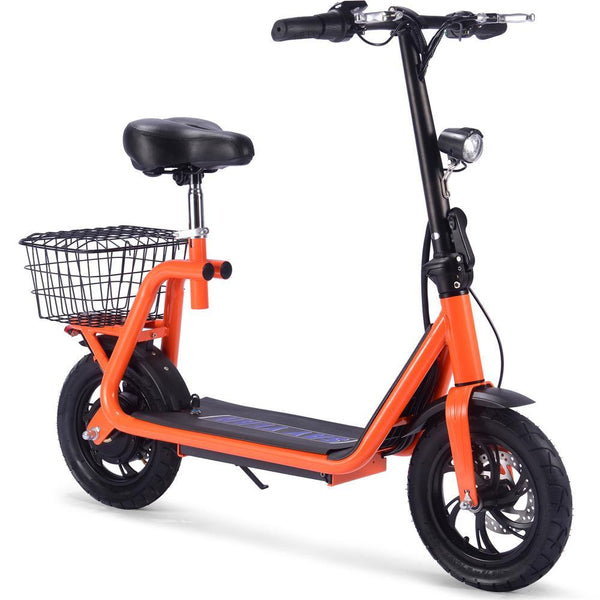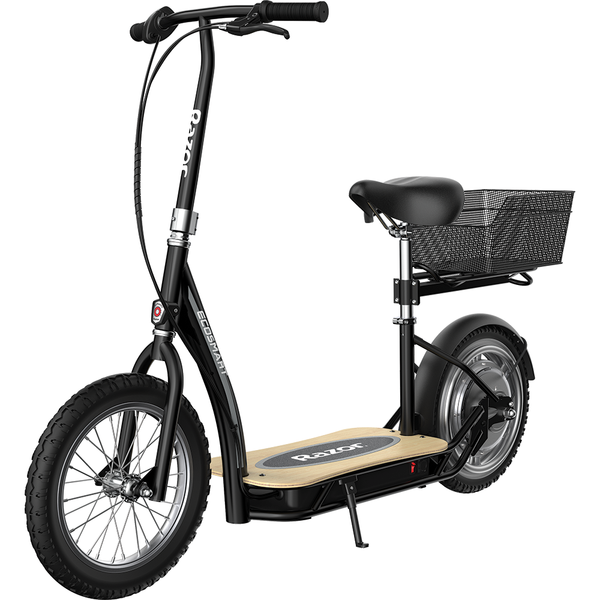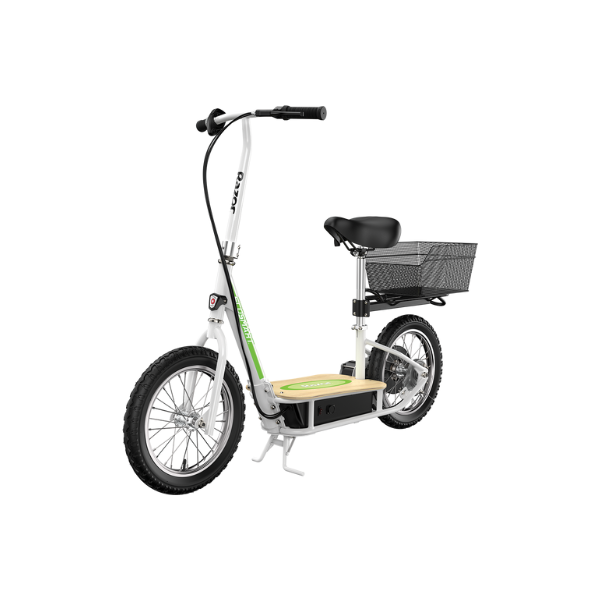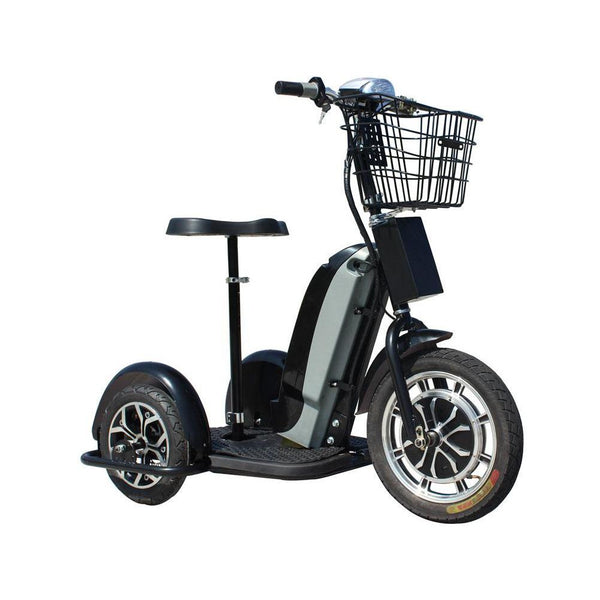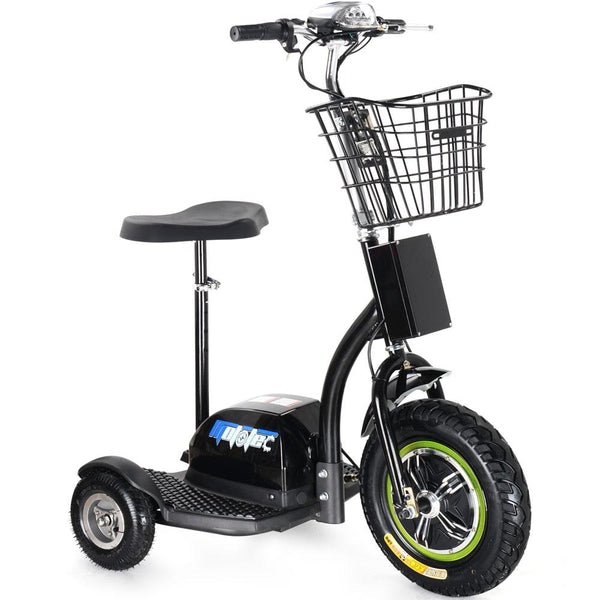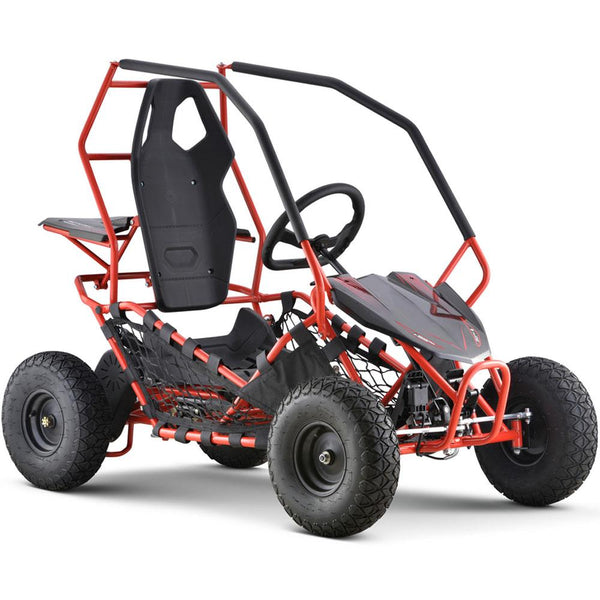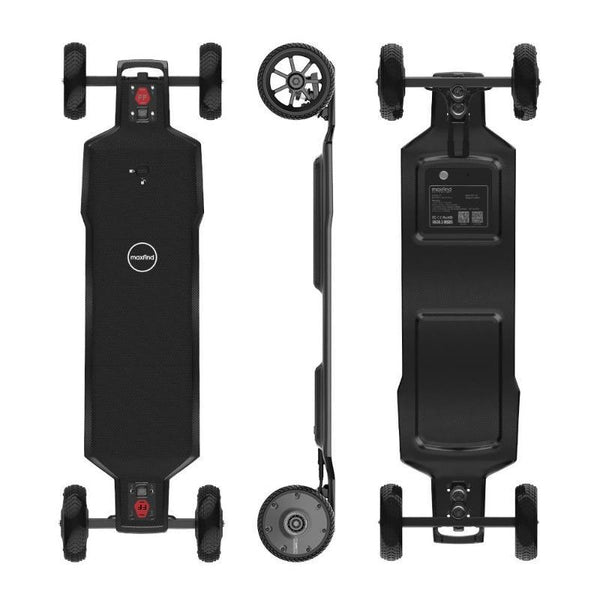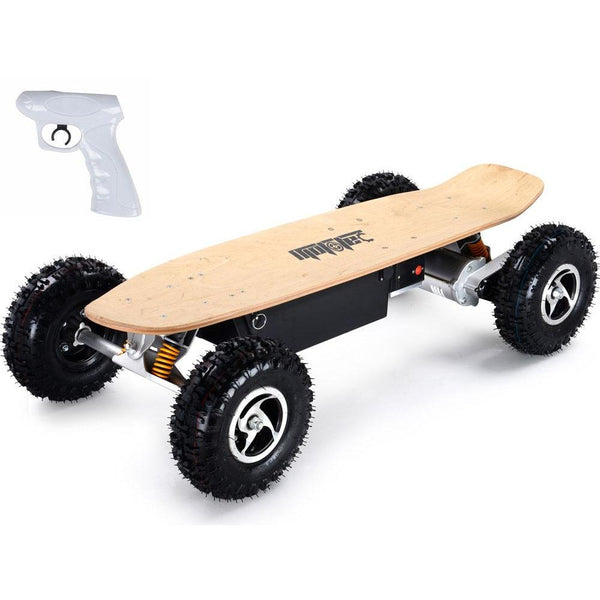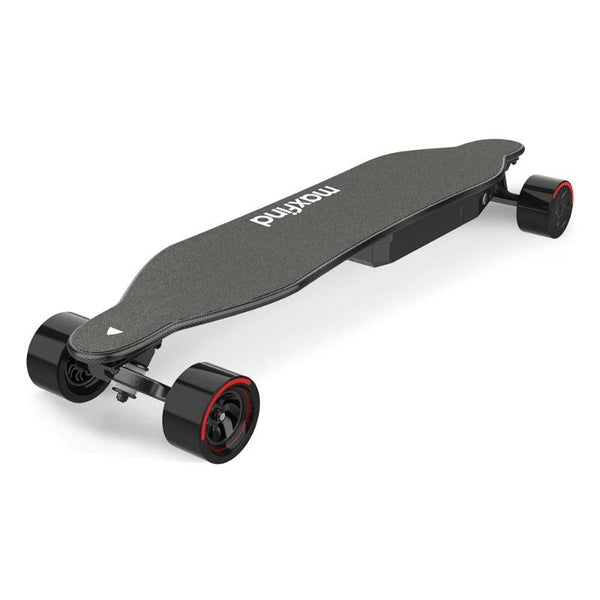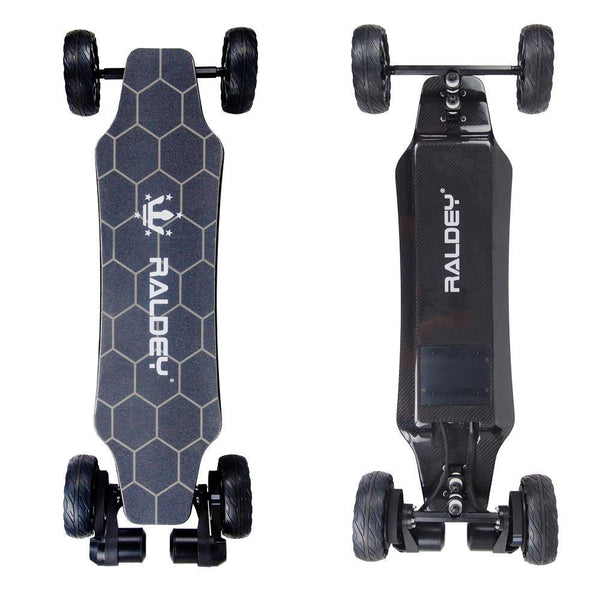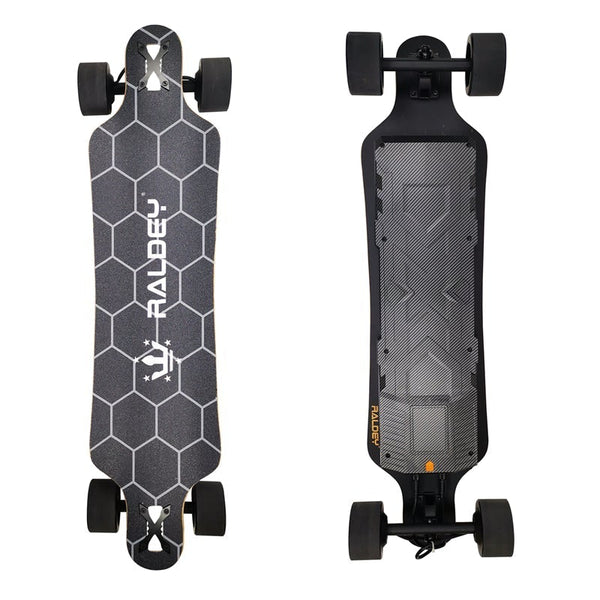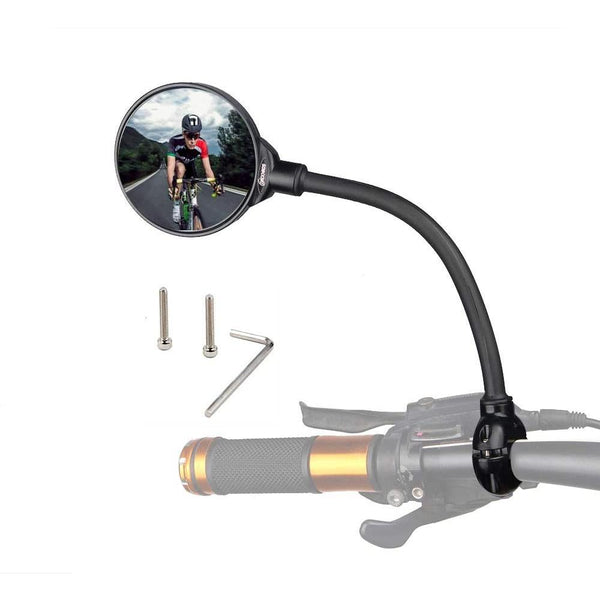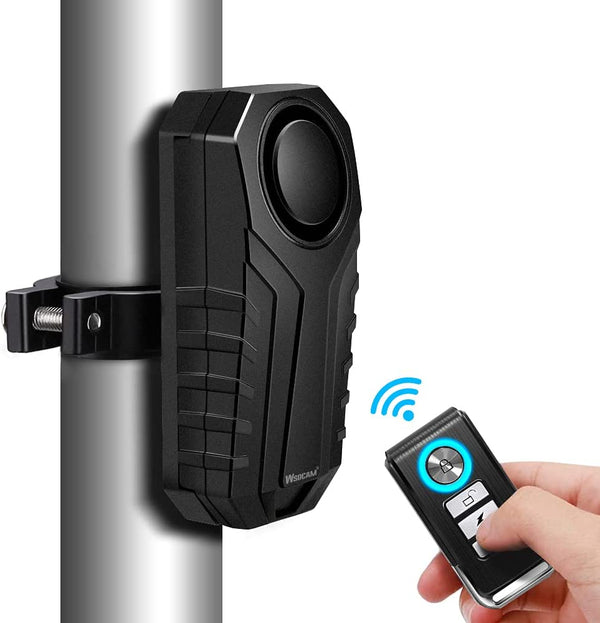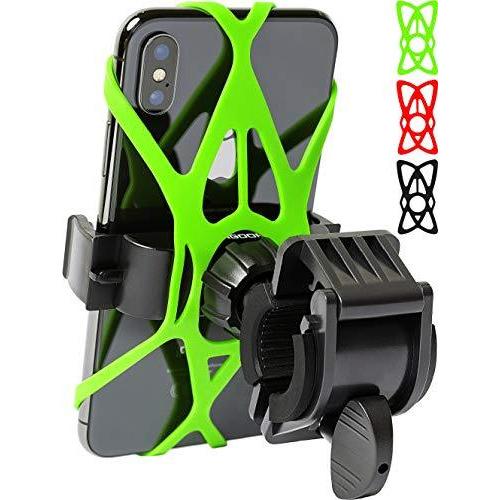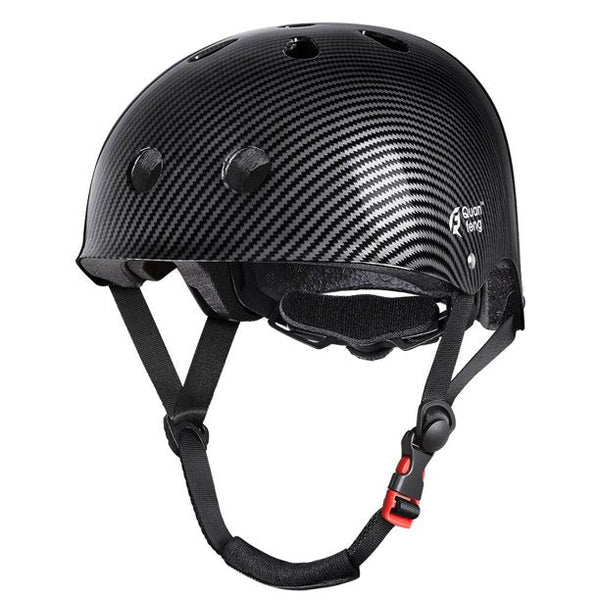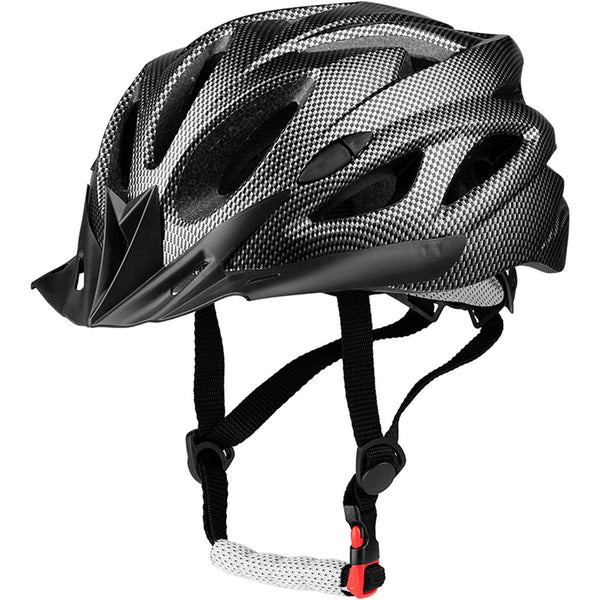The battery beats like a heart in an electric bike. A good battery lets you go wherever your heart desires. But how do you know if a battery is good? This article explains electric bike batteries so you can shop smartly and chat with your ebike friends.
You need to check the type of batteries on your electric bike to avoid missing important information, such as its weight and discharge rate. This article also shows you their differences and options, such as the Qualisports Samsung that lasts long.
Are you ready to get charged up? Let’s pedal away.
Best Examples of Electric Bike Batteries Explained
Electric Bike Paradise is among the ebike supply stores that stock ebike batteries for many electric bike models. Here are some of the best ebike batteries on the shelves:
Revi Bikes Lithium Batteries

Top Features
- Fit model: Cheetah
- Life of 800 cycles
- Range of 42 miles per charge(48V 17Ah
This Revi bike battery for Cheetah ebikes is a high-performance lithium-ion battery that uses Samsung cells to power your rides.
It has two types to choose from according to the average distance you cover. The 48V 13 ah has a range of 28 miles per charge, and the 48V 17 ah covers 42 miles per charge.
Get this powerful battery for your Cheetah ebike at a 50% discount on Electric Bike Paradise.
Qualisport Samsung Lithium Battery

Top Features
- Fit model: Beluga
- Capacity: 48V 10.5Ah
- Weight 6.85 lbs
Most Samsung batteries are known for their excellent long-term performance, and that’s what you can expect with the Qualisport Lithuim-ion battery for Beluga ebikes.
This seat post battery weighs 6.85 lbs, with a capacity of 48V and 10.5 ah.
Get this authentic Samsung battery with free shipping to wherever you are.
A Brief History of Electric Bike Battery Development and Innovation
Since the 1980s, ebikes have undergone significant transformations from combustion engines to the first Nickel Cadmium battery on the 1992 Zike ebike. Until 2001, many ebike manufacturers experimented with different energy cells to produce various battery types, giving ebike manufacturers affordable product options.
Cheaper ebikes got bulky lead acid batteries, while newer ebike models enjoyed lighter Lithium ion, Nickel Cadmium, and Nickel metal hydride batteries.
Here are the main types of ebike batteries explained, their advantages, and shortcomings.
Types of Ebike Batteries Explained
Scientists have developed different battery technologies and sizes suitable for electric bikes. Let’s compare and contrast the most popular electric battery types for your electric bike.
Lithium-ion (Li-ion) Electric Bike Batteries Explained
Lithium-ion batteries are the most popular type of electric bike batteries because they require less regular maintenance than the other types.
While they all work more or less the same way, lithium-ion ebike batteries come in different types - lithium manganese batteries, lithium-ion polymer batteries, NCA, NCM, and LiFePO4.
Pros
- High capacity to power your electric bike for long distances when fully charged.
- Low self-discharge and rarely lose power on standby.
- No memory effect; hence they don't need to be charged regularly to maintain capacity.
Cons
- Slightly more expensive compared to the other battery types.
- They are easily damaged when exposed to low temperatures.
Lead Acid Ebike Batteries Explained
A Lead acid battery is a rechargeable ebike battery that uses lead and sulphuric acid, whose chemical reaction produces electricity.
Pros
- Most affordable electric bike battery
- High current density provides much more power
- Work perfectly under all weather
Cons
- Heavier than Li-ion batteries, ultimately slowing down your electric bike.
- Prone to discharging on standby, making them less efficient for non-daily commuters who must charge them again before use.
Nickel-Cadmium (NiCd) Ebike Batteries Explained
This electric bike battery uses nickel oxide hydroxide and metallic cadmium as electrodes. However, they are not as common as Li-ion and Lead acid batteries.
Pros
- Fast to full charge
- Low cost and very affordable
- Have high power density
Cons
- High self-discharge on standby
- Have a memory effect
Nickel Metal Hydride (NiMH) Ebike Batteries Explained
Nickel-metal-hydride batteries have been in use for many years thanks to their high density compared to lead-acid batteries.
Pros
- Easily replaceable
- Have a high capacity
- Less toxic to the environment.
Cons
- Slow charging rate
- Low energy density
Key Features To Look For
Different electric bike batteries share universal features you should note before you go ebike shopping for your preferred supplier.

Voltage of Ebike Batteries Explained
Voltage is the amount of electrical pressure or force your ebike battery produces; higher voltage means more energy to power your ride.
Note that battery voltage depends on the size of the ebike, meaning ebike batteries for smaller ebikes have less voltage and vice versa.
Ideal electrical bike batteries are between 36V-48V.
Capacity of Electric Bike Batteries Explained
Battery capacity is the energy the battery cell generates, usually expressed in Amperes (amps).
The battery’s amps/hour rating (ah) lets you understand how much amperes your battery provides every hour.
The best ebike batteries have a high capacity, usually 10 ah.
Watts of Electric Bike Batteries Explained
Watts denotes the combined power unit when your ebike battery’s Volts and Amps act on each other.
You will find that most ebike batteries have between 300-500W, but more ebikes are embracing the powerful 700W batteries.
You can tell the amount of Watts your battery produces every hour with the Watts/hour rate (Wh)
Battery Brands and Manufacturers
If you want to get the most power out of your electric bike battery, a good warranty, and peace of mind, shop for trusted brands.
The most popular ebike battery brands use power cells from independent manufacturers, such as:
- Samsung
- Panasonic
- Yamaha
- LG
- Bosch
These manufacturers provide cells for the most sought-after battery brands, which have been tried and tested by many reviews and electric battery guides with the best ebike batteries explained.
5 Factors to Consider Before Buying an Electric Bike Battery
Before buying an ebike battery from any brand or store, consider the following factors to get the best quality products.
Brand
Buy a battery from a reputable brand/manufacturer to get high-quality products with efficient features and a valid warranty in case Murphy’s law applies.
Weight
The weight of your ebike battery has a significant effect on the general performance and handling of your ebike.
Most ebike batteries weigh 4-8 lbs, depending on their size, chemical components, and energy capacity. The high-capacity batteries weigh more than lesser-capacity batteries.
Durability
If properly taken care of, an excellent electric battery can serve you for at least three years without showing signs of weakness or faulty discharge.
A durable battery saves you from regular maintenance expenses and buying a new battery every year.
Cost
Quality isn’t cheap, so don’t expect any less when getting a good ebike battery. Not all expensive batteries guarantee quality, so always weigh the cost vs. performance.
Availability
The best type of ebike battery is readily available on the market. A unique battery is all fun and games until you begin the hassle of getting spare parts or replacing them if it is a rare brand.
FAQs About Electric Bike Batteries Explained
Here are some other common concerns by ebike battery researchers, plus additional information to check out.
What Is the Lifespan of Ebike Batteries?
A good Lithium-ion ebike battery has a lifespan of around 3-5 years, depending on the brand and how well you take care of it. Check out everything you need to know about Lithium-ion batteries and their care.
Do All Ebikes Have Removable Batteries?
Not all ebikes have removable batteries. Some ebikes have integrated batteries inside the bike’s frame, also known as hidden batteries, while others can be detached.
The placement of your battery entirely depends on your ebike model.
Final Thoughts on Understanding Electric Bike Batteries
Your electric bike’s battery makes it special, so you need a dependable one that powers your movements without fail. You can now choose an ebike wisely for your adventures or mobility options for seniors after learning about ebike batteries. Reach out to us today, and we’ll take care of all your mobility needs




